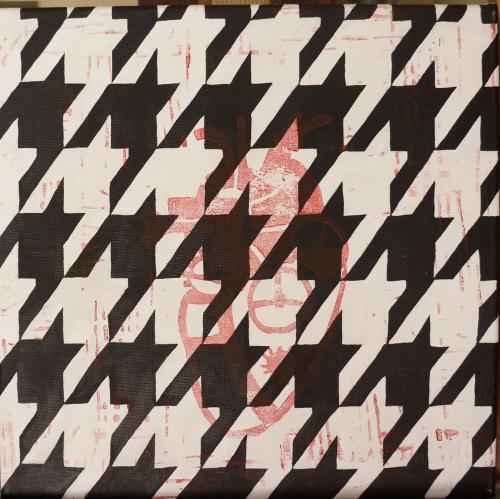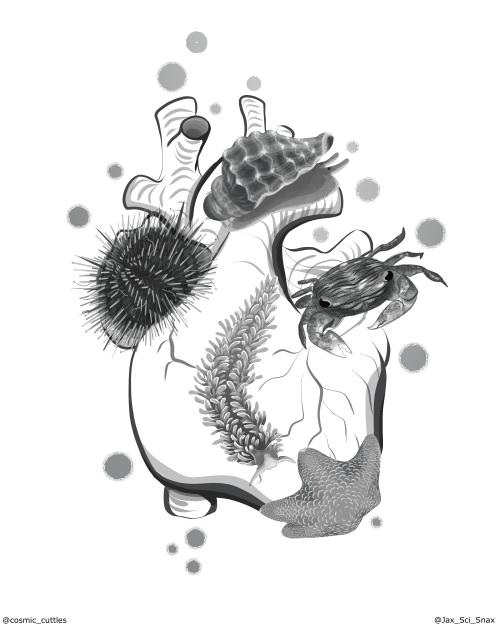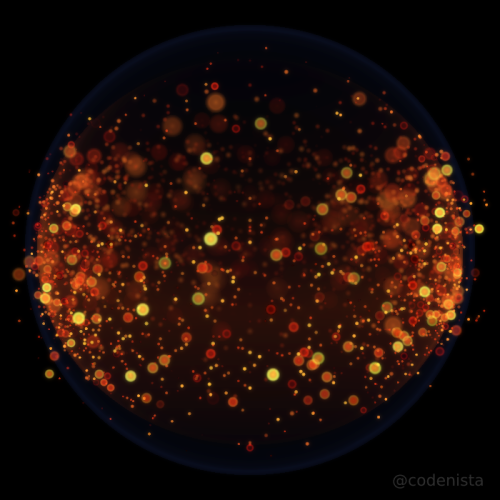
2022 Science Art Contest Winners
Quick Summary
- Meet the 2022 sciart contest winners and see their stunning works!
This year, we hosted a science art contest in conjunction with UC Davis Coastal and Marine Sciences Institute and the UC Davis Center for Mind and Brain. We received incredible entries across four categories. Read on to find out more about the winning pieces.
UC Davis Affiliates:
First place goes to Darren Chan with their depiction of a heart.
What is the science behind the image?
The heart is a muscle that works non-stop, all day and all night. I connected the heart with gears because both have many different components that work together to function seamlessly. The heart has chambers, valves, and ventricles that all work together to pump blood throughout the body. I chose to represent these components as gears because one component affects the other and they all need to work together to function properly.
How important is art in your science journey?
When I was young, I really wanted to be an artist. As I got older, I realized the path of being an artist is harder than I thought. Science and art seemed the complete opposite of the spectrum, but I realized I can connect both of my passions into one. Incorporating art in my science journey allowed me to keep thinking of how science is embedded in my life in creative ways.

Second place is awarded to Olivia Chilelli with their painting of extinct passenger pigeons.
What is the science behind the image?
For this piece, I wanted to represent the place where science and art naturally meet in my opinion, which is taxidermy and animal preparation. I've always loved that well-done taxidermy can take viewers to places that they have never traveled to, or places where the organisms showcased are extinct. Taxidermy allows the public to understand animals in a way that can be impossible via textbooks and scientific papers. I chose to paint a passenger pigeon over three stages of life, the skeletal pigeon of today looking over the two live pigeons of the past, long extinct. The branch in the pigeon's beak represents a dead olive branch, meaning that even though these birds can never be brought back, we can still study their anatomy and physiology through the many preparations that were made of them decades ago.
How important is art in your science journey?
As someone with a naturally creative mind who has a passion for science, combining these two is very important to me. I often use art as a study tool, whether it be hand-drawing diagrams of complex processes in order to understand them, or studying anatomy through drawing or painting, which I got to do with this piece. I've never been one to be able to understand STEM concepts right off the bat, or understand them through math, so art is my favorite study tool to use. Art and science aren't usually seen as subjects that go hand-in-hand, but I hope this misconception can change over time. Throughout my life I have seen that art is a tool for science, and science is a tool for art.

Local Davis/Sacramento Community:
First place goes to Jacqueline Rajerison with their illustration of marine invertebrate model organisms.
What is the science behind the image?
Invertebrates may be spineless, but these ones certainly have the guts to survive in the ever-changing intertidal zone. These ocean friends (the angular unicorn snail, purple sea urchin, shag-rug sea slug, striped shore crab, and bat star) each have a tool box of various adaptations and strategies they use to brave the fluctuating temperatures, solar radiation, and changing water levels. When I was an undergraduate student, I took courses in Bodega Marine Laboratory. I, along with my classmates, got to research these animals in particular since they can be found on the coast of California. Through that experience and similar ones, invertebrates charmed their way into my ‘heart.’ This illustration offers people a glimpse of the amazing diversity found in the world of sea creatures without backbones.
How important is art in your science journey?
Art helps me be a well-rounded scientist. In the face of climate change and the overwhelming emotions that come with it, I look to making art as a means of catharsis. Throughout undergrad, drawing organisms and fun visual metaphors kept me grounded when studying for challenging classes. As an artist, I’ve learned to approach science communication with accessible design in mind. Having peers in different fields continues to help me grow as an artist and a scientist. I hope to use these skills to continue making marine science more accessible through scientific illustration and science communication!

Second place goes to Sarah Yunair with their computer-generated image of fire in microgravity.
What is the science behind the image?
NASA has been doing research on the ISS into fire in microgravity, in the hopes of gaining more insight into safer methods of combustion in space. Normally, flames look the way they are because hot air rises against gravity, but in places like the ISS where there is little gravity, flames burn in a round shape. The small circles of bright yellow or orange you see are caused by soot, carbon residue that often causes environmental and health issues, and the lack of gravity causes these glowing soot particles to propel outwards like a firework. I first saw an image of NASA's microgravity flame on Instagram, and I thought it was so beautiful I had to try to recreate it.
How important is art in your science journey?
Art motivates a lot of what I do in my field of computer science. The flame you see was generated through a program I wrote. I've always loved the idea of creating beautiful images, but I wasn't very skilled in drawing. Instead, I found that my logic-attuned brain thrived in coding, and I later discovered that there were many opportunities for my creative side to thrive in coding as well, whether it's in generating images like the flame image you see, web development, video game programming, or more. It goes to show that computer science is a field rife with variety and for people like me, bridges the gap between logic and art.

California:
First place goes to Victoria Kearney with their submission of a tarantula.

Out of State:
First place is awarded to Yuhan Liu with their watercolor-and-ink painting of a neuron among foliage.
What is the science behind the image?
My watercolor and ink painting depicts a neuron, or nerve cell, blending into foliage. Found in the brain and spinal cord, neurons are responsible for sending and receiving sensory input from the outside world. I was inspired by the structure of neurons, and how their sprawling patterns are found throughout nature, especially in the plants in my backyard. I wanted to show their resemblance; while neurons cannot be observed with the naked eye, the form of their dendrites, or signal receivers, can also be observed on a much larger scale. The repetitive elements of nature have always fascinated me, and I love using art to depict those connections.
How important is art in your science journey?
Art is an integral part of my science journey! Painting has been a long-time hobby of mine, and scientific subjects are my favorite to study. As a visually-oriented learner, I find graphs, diagrams, and images to be the most helpful aids in understanding complex concepts. Scientific images also have a great aesthetic appeal, which is why I love to explore subjects like natural landscapes, anatomy, and animals in my artwork. Currently, I am a college freshman studying computer graphics. I am passionate about the creative applications of technology. In the future, I hope to invent image-generation tools, using artificial intelligence and computer vision, that serve research or artistic purposes.


Comments